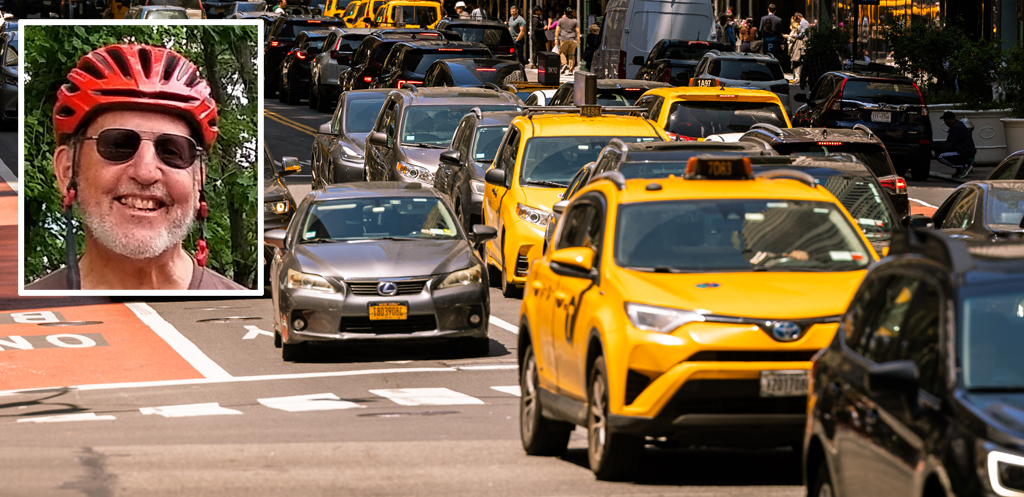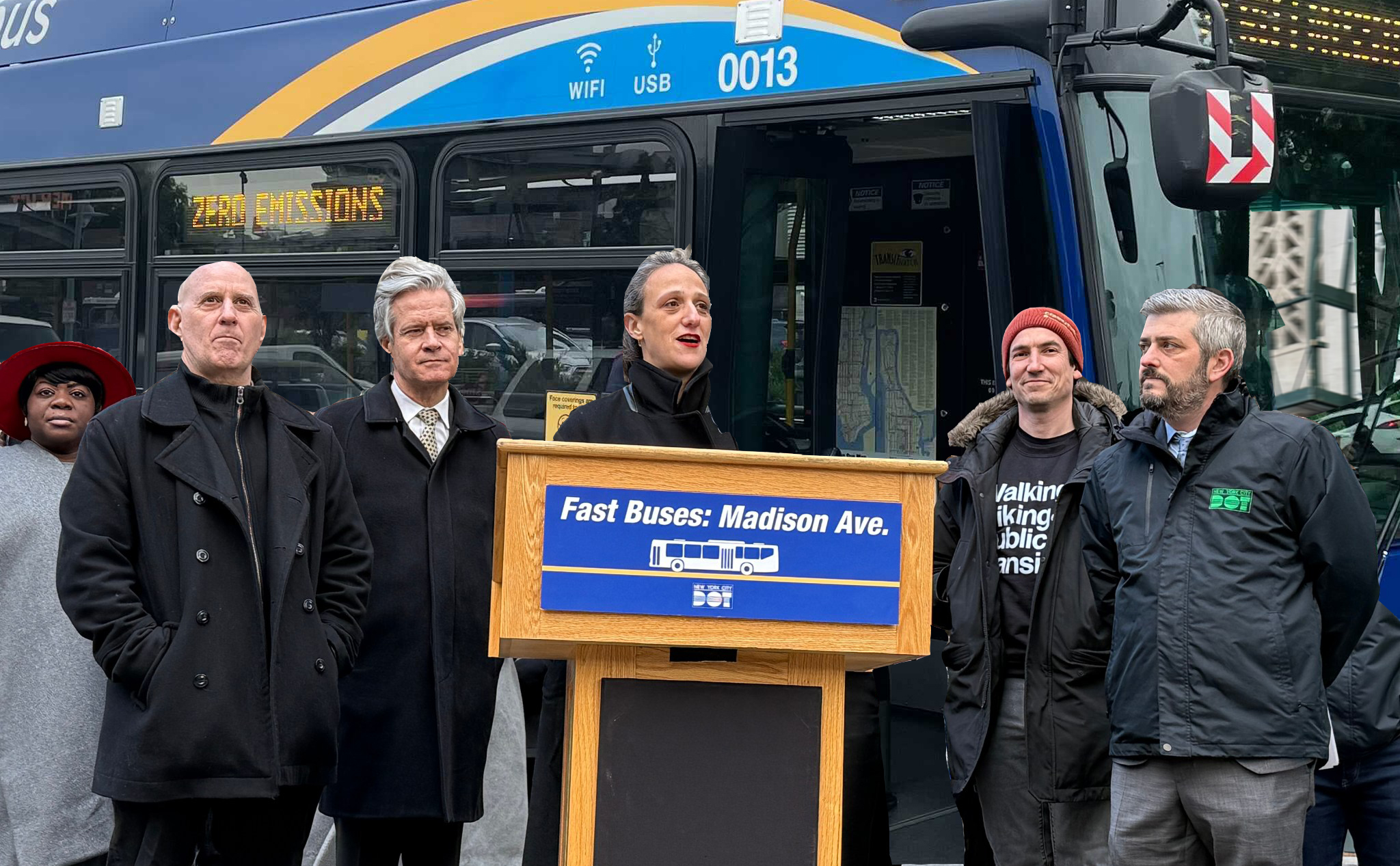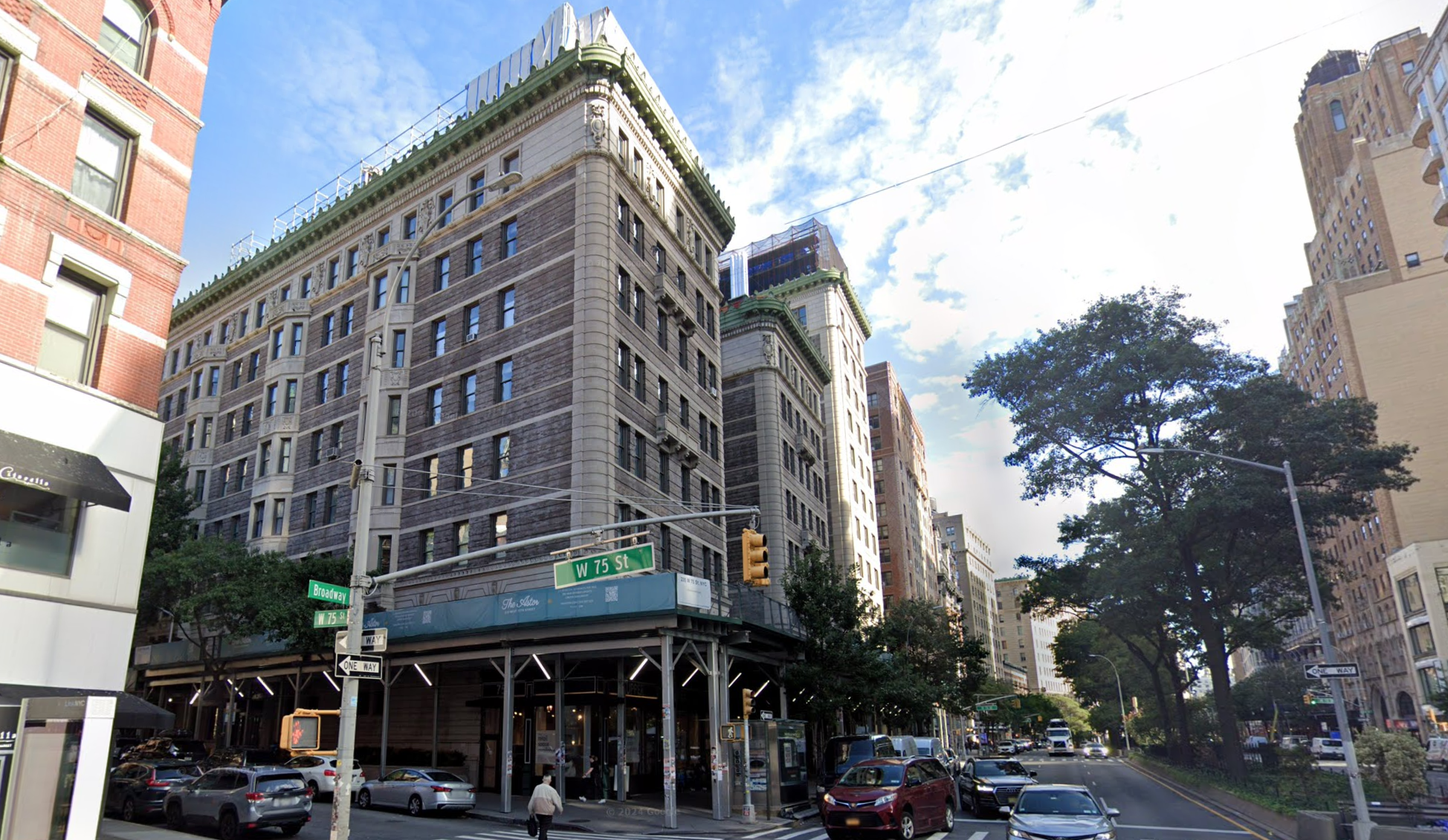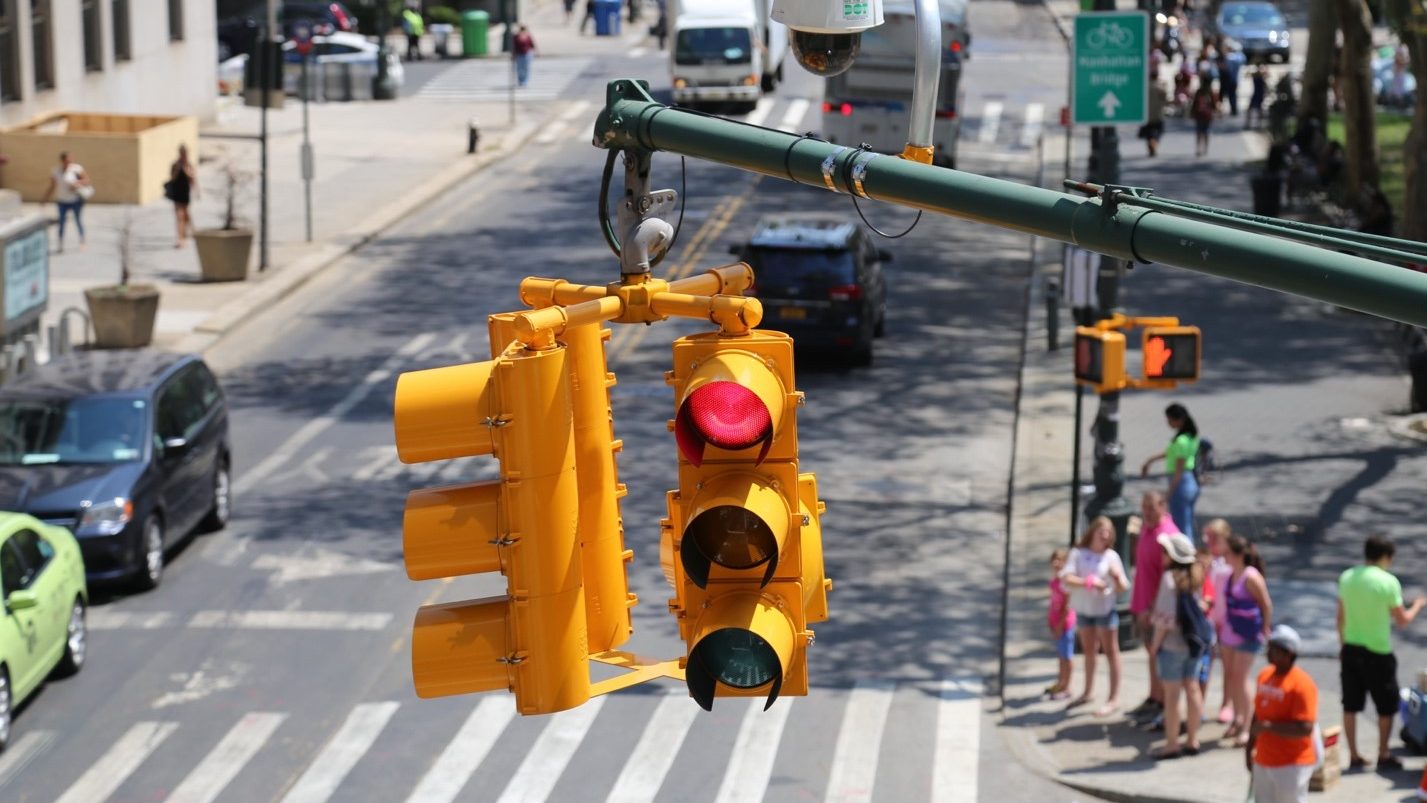Mayor Adams this week became the latest public figure to prematurely equate more electric vehicles with cleaner air and lower carbon emissions. Yes, there’s a connection, but it’s far from ironclad, since it requires that electrics replace rather than add to use of combustion (gasoline) vehicles, which is not a given.
The mayoral occasion was a Taxi and Limousine Commission press release on March 3 announcing that New York City in January surpassed one million electric ride-hail trips ― rides in battery-powered Ubers and Lyfts. Feel free to yawn: also in January, winter’s harshest month, New Yorkers took nearly two million rides on Citi Bikes. But there’s no denying that trips in electric ride-hail vehicles are surging: the January 2024 figure touted in the TLC statement, 1,080,000, was seven times the 157,000 rides in January 2023.
It’s true that New York, festering in gridlock, ought to be terra incognita for combustion vehicles, especially with their propensity to spew lung-lacerating small particulates and climate-clobbering carbon dioxide when running at low speeds. But New York traffic is also a complex ecosystem whose interactive effects can ricochet in unexpected ways — which is why the mayor is on thin ice in branding the surge in electric ride-hail vehicles a clean-air and climate win.
What pushed the number of electric ride-hail trips over the million-a-month threshold was almost certainly the TLC’s October decision to allow unlimited electric ride-hail vehicles to operate in the city. The initial response generated between 1,000 and 1,500 permit applications (official figures aren’t available). Then, on Nov. 13, a State Supreme Court judge ordered the Taxi and Limousine Commission to restore the cap on new licenses, pending an environmental review.
Given the 80,000-vehicle cap, the increase in the size of the fleet would have been just 1 or 2 percent — except that the judge’s order gave the TLC four and a half days before the temporary restraining order took effect. In a flash, a passel of sketchy insurance brokers went to work ushering drivers through the TLC's fast-tracked permit process. By late February, the TLC said it had issued 7,800 new licenses and that another 300 vehicles were undergoing inspection. Most of this further tranche of around 8,000 new ride-hail vehicles have hit the streets. And New Yorkers are surely paying in worsened gridlock, danger and pollution.
That tab looks alarmingly steep. In November, I wrote a report [PDF] outlining precisely how letting Uber and Lyft deploy thousands of new electric vehicles without eliminating an equal number of gasoline vehicles would compound congestion and worsen pollution. The NY Taxi Workers Alliance submitted my statement as an affidavit in its Article 78 petition that led the judge to block the increase.
My reasoning was obvious: all things equal, more vehicles mean more gridlock. In addition, worsened congestion pushes “incumbent” fuel-burning cars and trucks into higher-emitting ranges of their driving cycles. The emission increases, though slight per vehicle, would mount across the millions of vehicles driven billions of miles in New York City each year.
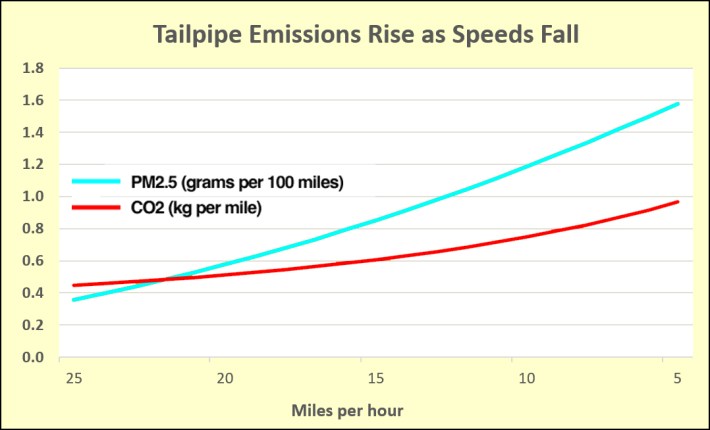
Naturally, I quantified these impacts, employing my BTA spreadsheet I’ve used for a decade-and-a-half to model congestion pricing. I found that if the total number of ride-hail vehicles in regular service grew by 5,000, the cost of lost travel time, more crashes, heightened emissions and so forth would sum to around $300 million a year.
To no one’s surprise, Mayor Adams couldn’t resist taking a victory lap — and it was a beaut. Here’s his triumphalist quote in the TLC press release:
These 1 million Green Rides represent a million fewer pollution-emitting car trips, meaning our city is greener and the air every New Yorker breathes is cleaner. We’re proud to lead the nation in tackling the climate crisis.
Precisely how many more Uber and Lyft trips in total are being made, now that thousands of additional electrics are flooding the streets, isn’t yet clear. TLC’s superb data switchboard only runs through December, so we can’t tell whether those million electric ride-hail trips in January were displacing (good) or adding to (bad) combustion trips. Even when the data become available, seasonal and other adjustments will be required to tease out the true import of the rise in electric trips.
But even if the total number of Uber and Lyft trips is unchanged, the physical presence of thousands more vehicles necessarily compounds traffic gridlock and therefore adds to incumbent combustion vehicles’ emissions. It also tightens the screws on for-hire-vehicle drivers as their shares of the pie shrink further.
The judge was right to order TLC to conduct an environmental assessment. Ride-hails, along with yellow taxis, have an outsize impact on congestion and pollution, far surpassing private autos on a per-vehicle basis.
I’ve been writing about EV boomerang impacts for years, such as in this February 2021 post, Beware the EV Congestion Boomerang. The metaphor remains the same. Too bad the TLC ― and the mayor ― overlooked it when they decided to let thousands more Ubers and Lyfts onto our teeming, weary streets.
